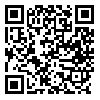Volume 14, Issue 5 (8-2014)
Iranian Journal of Medical Education 2014, 14(5): 437-447 |
Back to browse issues page
Download citation:
BibTeX | RIS | EndNote | Medlars | ProCite | Reference Manager | RefWorks
Send citation to:



BibTeX | RIS | EndNote | Medlars | ProCite | Reference Manager | RefWorks
Send citation to:
Hosseini S N, Mirzaei Alavijeh M, Ataee M, Jalilian F, Karami Matin B, Rastegar L. E-learning Adoption by Faculty Members of Kermanshah University of Medical Sciences and Health Services: Faculties’ Viewpoints. Iranian Journal of Medical Education 2014; 14 (5) :437-447
URL: http://ijme.mui.ac.ir/article-1-3192-en.html
URL: http://ijme.mui.ac.ir/article-1-3192-en.html
Seyyed Nasrollah Hosseini 
 , Mehdi Mirzaei Alavijeh
, Mehdi Mirzaei Alavijeh 
 , Mari Ataee
, Mari Ataee 
 , Farzad Jalilian
, Farzad Jalilian 
 , Behzad Karami Matin *
, Behzad Karami Matin * 
 , Latifeh Rastegar
, Latifeh Rastegar 


 , Mehdi Mirzaei Alavijeh
, Mehdi Mirzaei Alavijeh 
 , Mari Ataee
, Mari Ataee 
 , Farzad Jalilian
, Farzad Jalilian 
 , Behzad Karami Matin *
, Behzad Karami Matin * 
 , Latifeh Rastegar
, Latifeh Rastegar 

(*) Associate Professor, Department of Public Health, Faculty of Health, Kermanshah University of Medical Sciences, Kermanshah, Iran. E-mail: bkm_1344@kums.ac.ir , o.rastegar@yahoo.com
Abstract: (36037 Views)
Introduction: E-learning is an individualized education and due to its low costs, Iranian universities have suggested the use of this method. In this context, recognizing the factors affecting the adoption and use of e-learning is important. The study was performed to determine the usefulness, ease of use and perceived barriers to E-learning considering the viewpoints of faculty members of Kermanshah University of Medical Sciences.
Methods: This descriptive cross-sectional study was conducted in year 2013 among faculty members of Kermanshah University of Medical Sciences. Participants were selected through simple random sampling with probability proportional to size. Data were collected using questionnaire through self-report. Data were analyzed using independent t-test and one-way ANOVA statistical tests at 95% significant level.
Results: The highest scores were respectively related to the domains of barriers (70.5 %) ease of use (68.4 %) and perceived usefulness (67.2 %). Highest scores in the three domains of usefulness, ease of use and barriers related to the items, were respectively related to the items of “more access to other experienced teachers in distance”, “ease of using computer software related to E-learning” and “low speed internet service” that achieved the mean scores 3.82±0.76, 3.6±0.95, 4.14±0.83 respectively out of 5 as a total score.
Conclusion: Considering the fact that perceived barriers had a greater proportion in E-learning among faculty members, therefore, it seems emphasis on perceived barriers can lead to beneficial results in E-learning.
Type of Study: Original research article |
Subject:
E-learning
Received: 2014/04/21 | Accepted: 2014/07/23 | Published: 2014/08/6 | ePublished: 2014/08/6
Received: 2014/04/21 | Accepted: 2014/07/23 | Published: 2014/08/6 | ePublished: 2014/08/6
پرسشنامه مطالعه [DOC 60 KB] (370 Download)
Send email to the article author
| Rights and permissions | |
 |
This work is licensed under a Creative Commons Attribution-NonCommercial 4.0 International License. |


